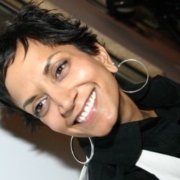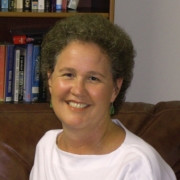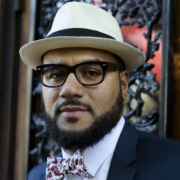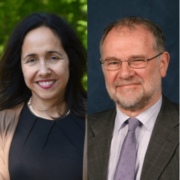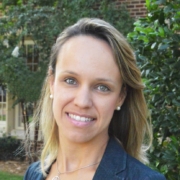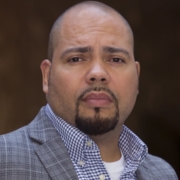Dinur Blum
Understanding Mass Shootings in the USA
Today we explore mass shootings in the USA. My guest is Dinur Blum who explores this phenomenon using a sociological lens.
Dinur Blum is a lecturer in the department of Sociology at California State University, Los Angeles. Together with Christian Gonzalez Jaworski, he published the book Critical Mass: Understanding and fixing the social roots of mass shootings in the United States. He is also the co-host of the podcast Learning Made Easier.
Citation: Blum, Dinur interview with Will Brehm, FreshEd, 287, podcast audio, July 11, 2022. https://freshedpodcast.com/blum/
Will Brehm 1:51
Dinur Blum, welcome to FreshEd.
Dinur Blum 1:53
Thank you. Happy to be here. Thank you for having me.
Will Brehm 1:56
So, can you give us an overview of the volume of mass shootings that have happened in the US particularly over time? Like how can we begin thinking about the number of mass shootings that have occurred in the US?
Dinur Blum 2:11
So, mass shootings are a fairly unique American phenomenon but they’re, unfortunately for us, not a very new phenomenon. In the 20th century, we saw about 900 mass shootings, and we think, “Oh, my God, that’s a lot”. And that pales in comparison to the number of mass shootings we’ve seen just in the last decade or so where we’ve had over 3,000 mass shootings in the span of about nine or 10 years. And so, we’re seeing a sharp uptick in the number of mass shootings.
Will Brehm 2:38
So, in the 2000s, we’ve seen a massive uptick, basically, is what you’re saying?
Dinur Blum 2:42
Yeah.
Will Brehm 2:42
So, you’ve analyzed 1,000s of these mass shootings over time. What sort of patterns jump out at you?
Dinur Blum 2:49
A few patterns jump out. One is that mass shootings today are a significantly younger phenomenon than they used to be in the 20th century. In the 20th century, the typical mass shooting was a man in his 40s or 50s, getting laid off, getting fired from the job unexpectedly, not being able to handle the stress and or the shame of that. Coming home, killing their families and then killing themselves. And so, it was a way out of a financial hardship and out of an embarrassing situation. Today, we’re seeing a lot of mass shooters between the ages of 18 and 30. So, it’s a much younger phenomenon. And while poverty and job loss are some of the fuels for the anger that gets these people to shoot, they’re not the only things. We see people getting angry at house parties, at bars, places where there’s a lot of alcohol flowing and people act badly sometimes when they’re drinking, including through violence.
Will Brehm 3:43
What about gender and race? What sort of patterns do we see with those factors?
Dinur Blum 3:48
So, with gender we see that mass shootings are almost exclusively committed by men. We very, very, very rarely see women commit mass shootings. When we do see it, it’s typically either as a response to abuse or like what we saw in 2015 in San Bernardino. You very rarely have a Bonnie and Clyde scenario where a woman joins her partner in a crime spree including in violence. As far as the racial patterns go, we actually see that most mass shootings, kind of like most single victim homicides, are intraracial. So, we’re seeing a lot of white on white, black on black type of deal, but where we see it being interracial tends a lot more to be with white shooters.
Will Brehm 4:28
Right. Okay. So, it’s a younger demographic, it’s a male demographic, often white demographic that we’re talking about.
Dinur Blum 4:38
For the interracial, yes. For intra, it’s more of a mixed bag.
Will Brehm 4:42
Right. Okay. Thanks for that clarification. And so, when we think of mass shootings, are they different in any way from some of the school shootings that we’ve seen which make headline news and they stick in our mind for some reason? I don’t know. I mean, it’s so hard to talk about these mass shootings because all of them are so horrendous. But there seems to be something particularly horrendous about a school shooting.
Dinur Blum 5:04
Sure. And that something horrendous is we expect schools to be safe. We expect that kind of the pupil’s status as students is going to protect that. The fact that it’s a school is going to protect them. We’re horrified because we’re not surprised when there’s violence at a bar or at a house party, we go, “Oh, it’s young people being idiots”, or some people will go, “I hope they were carrying so they could have protected themselves”. But we don’t have that kind of expectation or that kind of fear at school. Now, that said, the fact that school shootings are rare is part of why they get as many headlines as they do. We are unfortunately seeing more school shootings. But compared to house parties and compared to bars, schools are still fairly and very comparatively safe spaces to be because there is no alcohol and theoretically, there are more eyes and ears. And that’s one of the things I think we need to get into if we’re going to talk about solutions, and that’s getting more eyes and ears on the problem. Not just in terms of law enforcement, but in terms of stuff that’s pro social that can help people stem their anger before it reaches that boiling point.
Will Brehm 6:08
So, before we look at some of these possible social solutions, let’s call them, I want to dig into this really uniquely American phenomenon here a bit more. Many people know that gun laws in the US or the second amendment in the US sort of guarantees a right to bear arms. And there’s been variations of gun laws over time. And there’s a big gun lobby. When you look across all of the data, is there any correlation to stricter gun laws resulting in fewer mass shootings or the inverse?
Dinur Blum 6:40
No. You have it spot on. For a lot of states -even when we look at places like California, places like Illinois, where there are strict gun laws, and there are shootings that happen- the gun laws make it a lot tougher for people to get their hands on weapons. And so, what a lot of them do, especially for a lot of the Chicago shootings, is they travel a couple hours to Wisconsin or to Indiana -states where there are much more relaxed gun laws- and then they drive back home and use the weapons at home. In California, we’ve seen people go into Arizona and go into Nevada to get weapons because there are looser gun laws, and then they bring them back. And so, the fact that it’s much easier access because of these relaxed gun laws means that: one, the gun laws are very inconsistent. The way they’re written and the way they’re enforced across the states. And people who are that angry, unfortunately, they’re going to be practical about their anger, and they’re going to find the path of least resistance, even if that means spending a couple hours and gas money to go out of state to get their weapons.
Will Brehm 7:37
So, one of the hard things, I think, for people probably in and outside the United States is to figure out why this is happening to such an extent, and particularly this increase that you’re talking about. And often an argument is presented that it is sort of a mental health issue of the shooter. You know, there’s a few bad apples, and it’s a psychological problem. And we need to sort of address that. What’s your response to such an argument that is often made in the aftermath of the shootings?
Dinur Blum 8:05
First of all, I think it’s a bad faith argument because if people truly, truly, truly believed that mental health was the cause of violent behavior then we’d see a lot more funding for mental health research, mental health treatment, mental health access. And I know that the Senate recently included a bill that adds funding for it -we’ll see what effect that has- but that’s the first time in decades they’ve addressed it. And so, I think mental health just acts as a scapegoat. And that’s a huge problem because we’re dealing with a population that’s already stigmatized, people are afraid of mental illness, they assume that mental illness, by default, means going to actively commit violence. But most people who suffer from mental illnesses are more likely to be victims of violence. But now we’re kind of stigmatizing them further because we’re associating this really bad behavior with a condition that we’re afraid of.
Will Brehm 8:56
So, another way to approach it, which is, I think, the way you are approaching it as a sociologist is to look at some of these social factors that are creating the conditions by which a shooter can sort of emerge and then commit violence. So, can you talk me through what sort of social factors exist that are actually creating the conditions for a shooter to emerge?
Dinur Blum 9:18
Sure. And these are conditions that can not only create the conditions, they can also push a person. So, sometimes, that person who went crazy may have had one too many stressors happen, and it’s an overload and they don’t know how to handle it. But things like chronic poverty, things like job loss or high unemployment rates, things like being underpaid, meaning you’re working full time and you still struggle to pay the bills because the job doesn’t pay. We look at things like relationship problems. And that doesn’t mean that your first partner is going to be the only partner you have but we know that domestic violence is a gigantic red flag that can accelerate toward murder if it goes unchecked. And now the recent bill that was passed looked at domestic violence as far as limiting access to guns, but one, where the hell has that been up until now? And two, what do we do? I don’t think that, actually let me backtrack and get my train of thought going. So, we’re talking about relationship problems being a red flag. It’s not that every single divorce or every single breakup means this person is dangerous. But it really does mean that you’ve got to pay attention to signs of domestic violence. You’ve got to pay attention to different forms of abuse because if a person is willing to hurt the people they are supposed to be obligated to love and to care for them, then there’s nothing that’s going to prevent them from hurting people that they don’t share that obligation to. The last two parts I’ll say is, especially with younger shooters, we’re looking at a lot of people who are isolated where their only community is online. And that’s not to disparage the presence of online communities but when you don’t have people who can keep tabs on you in-person and say, “Hey, what’s going on? Are you okay”? That can be a problem. And then the last big one is alcohol, where, especially with younger shooters, people get drunk, they see someone they don’t like, and or they get into an argument and one thing leads to another. And when people are drinking, they don’t make their best decisions. And if they’re firing inside a house or instead of a bar, bullets are going to ricochet and hit people that aren’t necessarily involved in the altercation.
Will Brehm 11:21
When you look at all these different factors, does anyone stick out to help understand why shooters are so much younger than they were previously?
Dinur Blum 11:29
I would say probably the combination of isolation and alcohol. The alcohol, we kind of see in more social settings. And so, it kind of affects the place of the mass shootings. The headline grabbers tend to be more of the isolated ones. The ones that are described as loners. The alcohol ones tend to be kind of the more common ones. And that’s more of the house parties and the bars.
Will Brehm 11:49
But presumably house parties and bars existed before the 2000’s, right? And so, what is it about isolation? Why do we see so much isolation today, and in particular, from the 2000’s onwards? Why do young men feel so isolated?
Dinur Blum 12:05
I think they feel like they’ve been promised a world that hasn’t been given to them. And they don’t know how to deal with the fact that they’re not being given what they believe they’re owed. And one of the things they’ve been taught from a young age is violence is an acceptable way to get what you want. And if we look at American history, violence is certainly part of this country’s history. If they’re going to look at it, they’re going to say, “Well, this was what was done. And so, I should be allowed to be as violent as I need to be in order to get my way”. That is one of the thought processes they go through.
Will Brehm 12:35
And so, why men though, right? So, if it’s not women that are doing that, because they’re being taught the same history. There’s white women that aren’t shooting in interracial –
Dinur Blum 12:43
But women have also been historically treated as second class citizens, and even in history, they are taught as kind of bit players. They’re taught as background characters. And so, there’s a different kind of strain. I think that that can lead to a lot more emotional strain, and maybe self-hate, self-loathing. Whereas for the men, it’s a lot more of a sense of entitlement, and “I’m going to get what I want. I’m going to take what I want, even if the other person doesn’t want it”.
Will Brehm 13:07
It’s so hard to sort of understand, like, the idea. And I think you have a chapter in your book about toxic masculinity, right? But what is toxic masculinity? And does that help us begin to explain this very strange phenomenon of young men resorting to guns to solve whatever problems they’re having?
Dinur Blum 13:27
It does. So, the way Christian, my co-author, and I define toxic masculinity was, an intentional -meaning the person wants to portray it this way, it’s conscious. So, it’s not accidental- and an exaggerated performance of masculine stereotypes. And we think it explains both the younger phenomenon today but even the older phenomenon in the 20th century because part of the idea of masculinity was this idea that the man was the primary and or the only income earner in the household. And in both centuries, one of the lessons that was taught was that violence is an acceptable way to resolve disputes. And when you’re taught that it’s okay to be violent to get your way and that violence and alcohol are two things that go hand in hand, that can lead to a person thinking, “Okay, I had something really bad happen to me”, or “I really don’t like this person. The way to handle it is violence”, because that’s what’s been modeled for them. That’s what’s been taught for them. And it’s been taught to them primarily by men they respect, be it parents, be it teachers, be it coaches.
Will Brehm 14:28
And then the key issue is because that sort of toxic masculinity and resorting to violence is -you know, I live in the United Kingdom and that’s quite a common feeling you know. I think Gary Young, he’s been on the show before, he’s written about how violent and potentially even more violent the English culture is, and for men than it is in the US. But the difference in his mind is that in the US, it’s much easier to then access guns and so therefore, that violence takes on a different meaning in the end.
Dinur Blum 14:56
Yeah. I would tend to agree that that access to guns makes it a lot more possible for a lot more young men to act on their anger. And there’s a problem where so many people’s anger is reaching that boiling point where that violence feels almost inevitable or at the very least, it feels plausible, like something they could do reasonably to solve their problem.
Will Brehm 15:17
I want to turn to the issue of the interracial shootings, which is a sort of a subcomponent of the larger issue of mass shooting. As you said earlier, it’s mostly white shooters. Why is that? How do we understand the racial dynamics of mass shooters being, you know, young white men?
Dinur Blum 15:36
I think we combine it with this sense of entitlement. One of the mass shootings that jumps to mind is from 2019 in El Paso, Texas, where a white shooter drove, I think, 600 or 700 miles to a specifically Hispanic town in Texas, as he knew parents would be doing back to school shopping in late August and opened fire. And he had wrote in his creed, I’m not going to give it the credit of a manifesto, but he writes this diatribe complaining about automation, but also about immigrants coming to steal jobs. And that second complaint is a fairly common refrain that throughout American history of when economic times are tough, people worry about the “right” kind of immigrant coming over. Whereas when money is flowing freely, people don’t care who does the work, they go, “Hey, there’s work to be done. There’s money to be made. We don’t care what people’s legal status is”. The economy takes a downturn, and all of a sudden, people start looking at it, and they start feeling like something that they were thinking about is taken from them, even though there’s no support for it. We know that a lot of the work that undocumented people do -I remember the New York Times running a study where they paid people, I think, $10 an hour to pick blueberries or pick something. And out of 130 or 140 people who started the season, only like seven finished it. And that’s with being paid much better than most undocumented people get. But for a shooter who’s angry, they don’t go “Well, this isn’t work I was doing anyway”, they go, “Oh my God! This person poses a threat to me. They pose a threat to my existence because they’re potentially taking money out of my pocket”. That’s how they interpret it. And they feel entitled to use violence to act on that.
Will Brehm 17:19
Does this racial component sort of also touch on like the longer history of America and some of the racism that we’ve seen over time, and sort of this is building on it in a way?
Dinur Blum 17:31
I think it absolutely does.
Will Brehm 17:33
And it makes me then wonder, you know, if we’re thinking of toxic masculinity in the US, and then sort of this racial component that is sort of long standing in the US; are there differences in toxic masculinity between races?
Dinur Blum 17:46
Yes, and no. In the sense that you see machismo, not just in white culture. You see machismo in Black culture, you see it in Latino culture, you see it in Asian culture. The question is: what kind of community exists, and does the community encourage that, or do they try and stem that balance? And I think that kind of varies neighborhood by neighborhood. So, there are going to be neighborhoods that are more violent because that’s kind of what people see as a means of survival. And there are going to be ones where there’s machismo, but it takes the place of boasting in terms of say shoes, it manifests itself in terms of boasting in terms of style, in terms of what you drive. So, that machismo can exist in different ways. It doesn’t just have to be violent.
Will Brehm 18:26
You know, when you did this analysis of over 2,000 mass shootings over time in the US, did anything surprise you? Did something like jump out at you that surprised you?
Dinur Blum 18:37
Just how many, like, the sheer volume of mass shootings surprised us because our definition of mass shootings is a little bit different than the FBI’s and so we knew that that was going to open up the number of cases. So, the FBI defines a mass shooting as four or more people who are killed, not including the shooter, or shooters. We defined it as four or more people who were killed or injured not including the shooter or shooters. And one of the things that jumped out along with the sheer number is a lot of these mass shootings end up with one person dead and like three or four injured, and so they count as mass shootings for us because we’ve got four more people who are killed or injured not including the shooters, but the FBI ignores it. And there is a case I remember, didn’t make a lot of headlines, but there’s a house party in Chicago and one person shot seven people but he shot them all below the waist so that they wouldn’t die. And so, all I could think of is like “Yeah, that’s going to absolutely count as a mass shooting.” Like seven people were targeted, but the FBI is not going to count it because no one died as a result of their injuries”. And so, I think just tweaking that definition slightly opened up a lot more cases for us to analyze. And we learned that most of these mass shootings don’t get a lot of publicity. They might get a paragraph or two in the local paper, they might get a five-minute spot on local news, and that’s about it.
Will Brehm 19:53
Would you say it’s normalized in the US at this point?
Dinur Blum 19:56
I think certain ones are. I know that the ones that gain headlines, I worry about them being normalized because one of the things that we noticed is the high-profile mass shooters, some of them are very much fame seeking. There was a mass shooting in Gilroy, California, not too far south of San Jose a few years ago, and the shooter was 19 years old. And he was the son or the grandson of someone who worked in, I think, the local city council. His brothers were accomplished athletes, but apparently his classmates didn’t really know who he was and he wanted to be remembered. And he didn’t care why he’d be remembered, just that he’d be remembered. And so, he lived stream his killing spree at the Gilroy Garlic Festival because any eyes are good eyes, any publicity is good publicity. And so, I worry about those becoming normalized because it means that we’re accepting the idea that mass shooters deserve a certain level of fame. I think you’ve got to report the incident but do so in a way that doesn’t give the shooter that additional publicity.
Will Brehm 20:59
They do things like that in say, like New Zealand, right, where they don’t reveal the name or the picture of the person who committed the crime.
Dinur Blum 21:06
That combined with their gun laws have resulted in far fewer mass shootings than we see in the US.
Will Brehm 21:11
Is there any country that is at all similar in terms of mass shootings as the US?
Dinur Blum 21:17
Off the top of my head, I can’t think of any that are that similar just because -and I’d need to do a little bit more research to give you a more thorough answer- but when we look at Western European countries, when we look at Asian countries, we know that they tend to have stricter gun laws and that keeps, even the countries where people carry- we know Switzerland, for example, people are allowed to have weapons, but it is so highly regulated, and people are monitored fairly regularly for how they use the weapons. It’s a uniquely different gun culture than what we see in the US where a lot of people like to believe that even today, it’s the Wild West, it’s the 1800s and that using the gun is the way to solve a dispute.
Will Brehm 21:55
So, what on earth can be done about this? Because it seems so intractable. It’s been going on for so long, in many cases, as you said, it feels normalized and I mean, even just this last, basically 30 days, there’s just been so many stories that come out. It’s hard to actually even remember where it all began. So, what can we begin to do about this?
Dinur Blum 22:16
So, I think we’ve got short term and long-term answers. And I think we need both because, you know, like, you just said, it’s been such an intractable problem. If we just say, “Well, it’s intractable, we can’t do anything about it”, it’s not going to make the situation any better. So, long term: one is, we start teaching kids, especially boys, from a young age that violence is not the only way, or it’s not the acceptable way to resolve disputes. But as far as some concrete steps that we can start taking in the interim, one is investing more in our communities in terms of jobs, in terms of volunteer opportunities, in terms of pro social rec. You know, keep people in a social area where they can have fun or earn money or do good things. And that’s a way for them to potentially blow off steam. It’s something that’s accessible to them, it’s something that’s part of their neighborhood, we talked about having liability insurance for firearms so that the more guns you own, you’re paying a premium each year on each weapon. And if any of those weapons are stolen and not reported, or they’re used in a way that shouldn’t be used, there’s some financial responsibility attached. We’d like the idea of the red flag laws targeting people who have a history of domestic violence, assault, battery because it’s such a big red flag. Like I said, if a person is willing to hurt the people they’re supposed to care for, then there’s nothing that’s going to prevent them from hurting the people that they don’t have that obligation to.
And then as far as reducing school shootings go, we’re looking at things like what’s called block scheduling, where instead of classes being one hour each, and the kid goes through six or seven of them in a day where you’re dealing with, say 30 to 40 people who like you are going through puberty, meaning their bodies hate each other, they’re not going to be in the best mood because most school shootings are committed at the high school level. And we see them committed by other high school students who feel isolated, who feel angry having the longer classes. And fewer classes each day allows for a little bit more of a sense of community to develop to get to know each other. It doesn’t mean that they’re always going to love each other. I know that it was high school, it was college, at least in high school, we all had to be there. And so, you wanted to make it the best you could even if you didn’t love everyone you’re in class with. But finding a way to reduce that anger. And we also look at -we know that this won’t be popular but- limiting the sales of refrigerated alcohol because we know a lot of people buy the chilled 24 packs or 12 packs, they drink and by the time they bump into someone early on at a party that they don’t like they’re ready to act on that alcohol. They’re ready to act on that anger in a way that we don’t think they would if they were sober. We’ve seen research by Robert Nash Parker and Kevin McCaffrey and by others where they just limited the sale of cold malt liquor, of cold 40’s in neighborhoods and violent assaults plummeted by like 20 or 25% in following years. And so, if we extend that we think that that could put a dent into assaults, into batteries and into mass shootings.
Will Brehm 25:12
I mean, a very nice menu of different options. You know, I do hope that states and the federal government can start working on some of them.
Dinur Blum 25:19
There is one more idea I do have for schools and that’s adding more counselors, adding more monitors and making it routine for students, ideally, even adding them into workplaces and just have it be part of the school routine where it’s not “Oh my god, this person went to the see the counselor, what’s wrong with them”? Just “Oh, today’s their day to talk to the counselor, no big deal”. And that way, there are some extra eyes and ears who don’t have to talk to law enforcement, but can say, “Okay, let me find you some help. Let me get you the help you need before things hit the fan, before situations get out of hand”.
Will Brehm 25:51
I really like the idea of treating this as a social phenomenon, and therefore a social problem that needs to be resolved rather than individualize it. And then, you know, give teacher weapons or put in more metal detectors in school entranceways, which always seemed as you said, it’s bad faith in a way. It does make me wonder, you know, the current economy around the world is sort of -inflation is high, job wage growth has been stagnant and is certainly not increasing at the low end. And it makes me wonder if issues of poverty are going to get worse, and some of these pressures that you’ve talked about may also get worse, and therefore, we may see more mass shootings. Is that actually a possibility? Like I hate to say it.
Dinur Blum 26:34
It is, unless the federal government does something to intervene. Whether that’s through job creation, whether that’s through stimulus checks. Any way of alleviating that economic pressure is potentially lifesaving.
Will Brehm 26:46
Well, Dinur Blum, thank you so much for joining FreshEd. It was really a pleasure to talk today.
Dinur Blum 26:51
Thank you for having me on.
Want to help translate this show? Please contact info@freshedpodcast.com
Related Guest Publication/Project
Critical Mass: Understanding and Fixing the Social Roots of Mass Shootings
From Suicide and Strain to Mass Murder
Mentioned Resources
Gary Young – Another Day in the Death of America
Remembering 23 Victims of 2019 El Paso Shooting
U.S. Builders and Farmers Crave More Immigrant Workers
Gilroy Garlic Festival Shooting
Red flag laws: Proceed with Caution
Recommended Resources
Gun Control in America: A Global Comparison
Mass Shootings in the US: Results from a Five-Year Demographic Analysis
A Sequence Analysis of the Behaviors and Experiences of the Deadliest Public Mass Shooters
Exploring Female Involvement in Acts of Terrorism and Mass Shootings
Masculinity, Ritual, and Racialised Status Threat: Examining Mass Shooter Manifestos…
The Violence Project: How to Stop a Mass Shooting
Making a Murderer: Gender and Violence against Women in Mass Murder Events
The Sociology of US Gun Culture
Masculinity, Aggrieved Entitlement, and Violence: Considering the Isla Vista Shooting
Racial Violence, Mass Shootings, and the U.S. Neoliberal State
Narcissism, Fame-Seeking, and Mass Shooting
Beyond Gun Control: Mapping Gun Violence Prevention Logics
Gun Violence, Structural Violence, and Social Justice
Mental Illness, Mass Shootings, the Future of Psychiatric Research into American Gun Violence
Have any useful resources related to this show? Please send them to info@freshedpodcast.com

